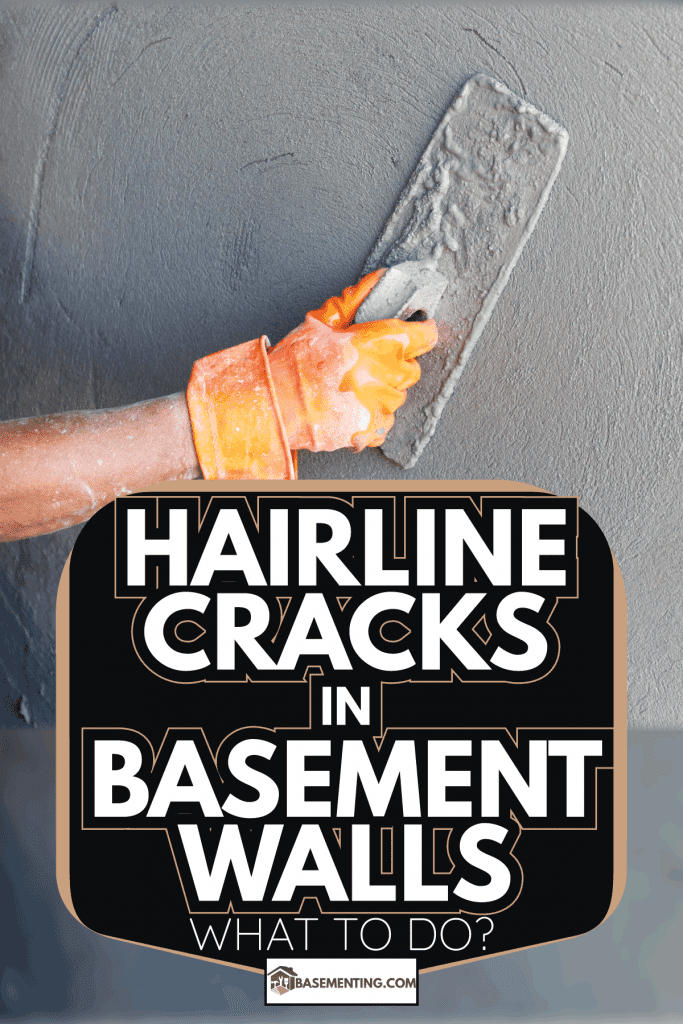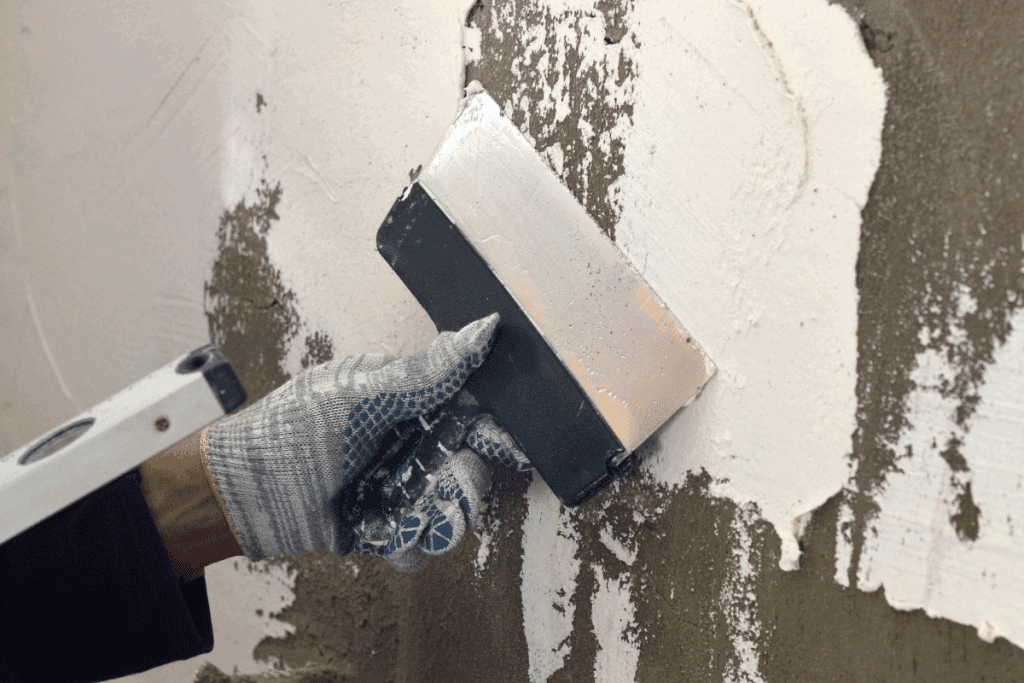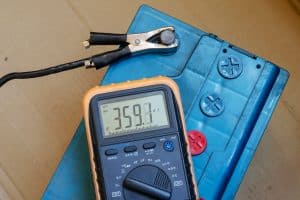Concrete is one of the go-to options for durable, cheap, and accessible building material, but it doesn't mean it is foolproof. Basement walls made of concrete are prone to damage from heavier structures, high levels of pressure, and water penetration. You may be wondering, are hairline cracks a major concern? How should you deal with them? We've asked the experts, and here's what they have to say.
It's normal to find hairline cracks once newer constructed foundations start settling and drying. You can quickly repair these cosmetic cracks by following these basic steps:
- Inspect the cracks.
- Prepare the wall.
- Repair the cracks.
- Seal the walls.
Identifying what kind of cracks are present on your basement walls saves you time and money when making the necessary repairs. Keep reading to get further insight on the different types of foundation cracks and how to deal with them.

Are Hairline Cracks In Basement Walls Normal?
Hairline cracks on a basement wall are normal occurrences. Foundation walls are bound to crack over time when they start settling and drying. For some walls, it takes about a month before these cracks begin to form.
Common foundation cracks usually run vertically or nearly vertical, posing no risk to the structure of the walls. However, these can still affect the durability and condition of your basement's foundation, such as by making way for water to seep in and trigger moisture collection.
Fortunately, vertical and hairline cracks fall under cosmetic damage. And so, they are easier to repair than structural wall cracks.
Read more about basement cracks such as those in the ceiling in this post: Why Is My Basement Ceiling Cracking?

How To Repair Hairline Cracks In Basement Walls
The following steps explain what you should do to fix up a hairline crack on the walls:
1. Inspect The Cracks
The first step to repairing a foundation crack is to identify what caused it. A wall can get cracked for several reasons, some of which may become severe issues in the future. To keep this from happening, determine the primary problem and address it accordingly.
Thoroughly inspect each crack and the surrounding structures. If applicable, eliminate the reasons for the foundation cracks unless they come from the expansion and contraction of the concrete.
Note that the depth helps determine the severity of the damage, as it could still lead to potential structural damage. Hairline cracks are typically shallow.
2. Prepare The Wall
Clear out any dust and debris inside or surrounding the foundation cracks. You can use a flat-head screwdriver, stiff wire brush, or other tools that are thin enough to fit the wall cracks.
If the basement wall cracks are wide enough, you can rinse them off and pat the area with a dry cloth or towel. Avoid doing this with narrow foundation cracks since they are trickier to dry.
3. Repair The Cracks
Use a concrete patching compound to fill up the cracks. Some manufacturers recommend using concrete bonding adhesives or primers before applying the patching material.
Apply the adhesive into the cracks and around them with a brush. Immediately wash the brush with soap and water after application unless you will discard it.
Use a putty knife for the patching compound. Apply as much as necessary according to the instructions provided with the product.
Firmly press onto each layer to force it into the crack. Let each layer partially dry before adding a new one.
Cement mixtures are an alternative patching material for wider foundation cracks. Apply thinner cement mixture inside the cracks as a primer before adding the cement.
4. Seal The Walls
Once the patch sets or fully dries, apply a waterproof sealant to the basement walls. It protects water from infiltrating the concrete.
You can put the sealant directly on the patched area alone, but applying it to the entire foundation wall makes it more effective. If the walls have paint and other coatings, you will need to remove these before applying the sealer.
If you're looking to change the walls, read about how to frame them in this post: How To Frame A Basement Exterior Wall
Can You Paint Over Hairline Cracks?
Yes, it is possible to paint over hairline cracks. Unlike wide foundation cracks, these usually don't require you to remove the paint before applying a new coat. With small, narrow wall cracks, you can head straight to repainting after making the repairs.
How To Paint Over Hairline Cracks
The steps listed below summarize how you should paint over hairline or thinner cracks:
- Repair the crack as necessary. Hairline cracks often only require you to fill the hole with patching material, such as epoxy.
- After the material sets, clean the wall with a water and bleach mixture to remove debris.
- Sand down any part of the damage to make it flush with the foundation wall.
- Apply the paint, controlling the pressure to distribute it evenly.
- Let it dry.
How Much Does It Cost To Fix A Crack In A Basement Wall?
If you're working on repairing the wall crack yourself, you only need to pay for the materials and tools. These are usually the patching compound, adhesive or primer, and waterproof sealant.
The price varies with different brands, but you can purchase all the materials you need for as low as $20. If you already have them, it could cost you even less.
When hiring a professional, foundation crack repair will cost somewhere between $250 to $800. These depend on the width and depth of the crack, but structural foundation cracks tend to cost more.

How Can You Tell If A Crack Is Structural?
Foundation cracks will either be cosmetic or structural. When a hole on the wall is large enough to cause damage to the entire wall, they are known as structural cracks.
Common signs of a structural crack include larger or recurring cracks and leaning or bulging walls. Situations like these should be inspected and fixed by a professional.
Cosmetic Cracks Vs. Structural Cracks
Simply put, foundation cracks are differentiated based on how much they affect the walls.
Cosmetic cracks usually only damage the surface and do not go deep enough to cause the foundation walls to become unstable.
On the other hand, structural cracks tend to disrupt the stability of the walls. The depth of these cracks can lead to bowing or impacting a large portion of the foundation walls.
How Much Concrete Cracking Is Acceptable?
Longer concrete cracks may already pose a risk of further damage to the foundation. Generally, foundation cracks wider than a credit card that appears to run deeply into the wall may already be too dangerous.
Any crack with a depth of less than 1/8 inch fall under cosmetic cracks, while foundation cracks more than 1/8 to 3/4 inch wide are considered structural cracks.
Foundation cracks also split in two common ways, particularly vertically and horizontally. Other than depth, the direction of cracks is another factor that helps identify how much breakage it causes.
Vertical or diagonal splits are a frequent sign of settlement in foundation walls, meaning they are less likely to impair the structure, while horizontal cracks imply the risk of wall failure.

In Closing
Basement walls made from concrete will eventually show cracks as time passes by, mainly due to settling. Hairline cracks are a result of this, but these foundation cracks typically won't harm the structure. Regardless, it's crucial to mend cracks on basement walls sooner to avoid further issues.
Repairs for cosmetic cracks require less work and can be done through DIY means using patching compounds. For wall cracks that weaken foundation structure, it's best to contact a professional to get it fixed up.



